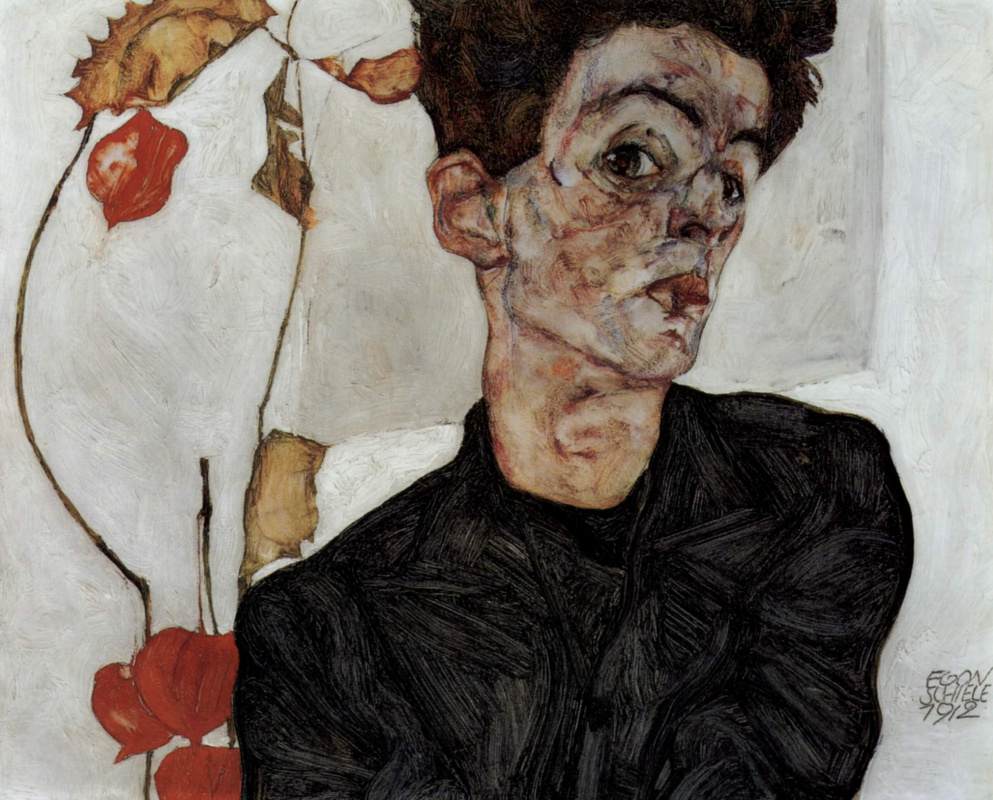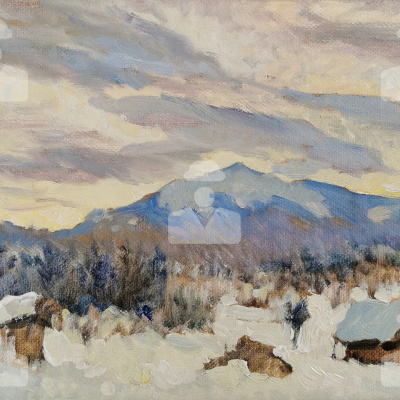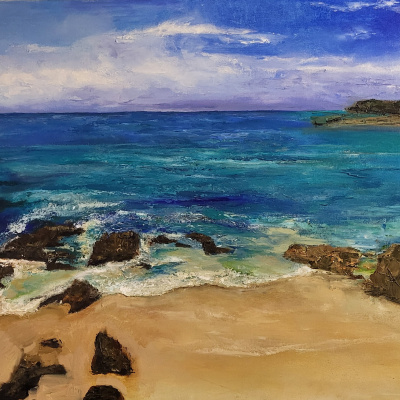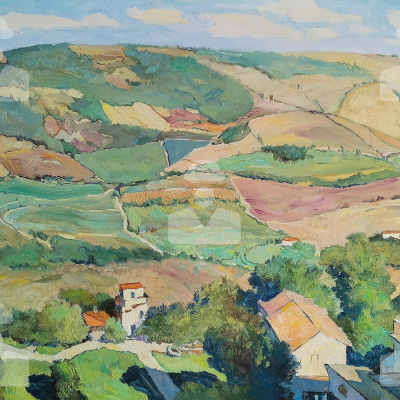A series of advertisements showing Schiele’s graphically contorted bodies (with explicitly rendered private parts) didn’t make it past the critical eyes of those selling advertising space in Britain and Germany. The artworks had to be covered up.
According to a Vienna Tourist Board spokeswoman, Helena Hartlauer, Transport for London rejected the original images, citing trepidation about depicting genitals in public space.
It’s been nearly a century since the Austrian painter Egon Schiele died, but his art — charged with erotic energy and usually showing more than a little skin — still ruffles feathers.
According to a Vienna Tourist Board spokeswoman, Helena Hartlauer, Transport for London rejected the original images, citing trepidation about depicting genitals in public space.
It’s been nearly a century since the Austrian painter Egon Schiele died, but his art — charged with erotic energy and usually showing more than a little skin — still ruffles feathers.
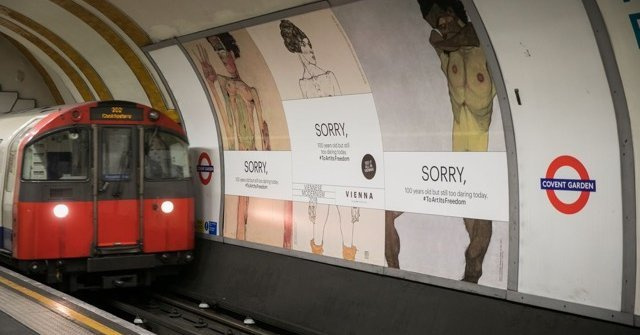
"SORRY, 100 years old but still too daring today," the banner reads. The modified images are on view on bus shelters in Cologne and building facades in Hamburg, to be followed by London tube stops.
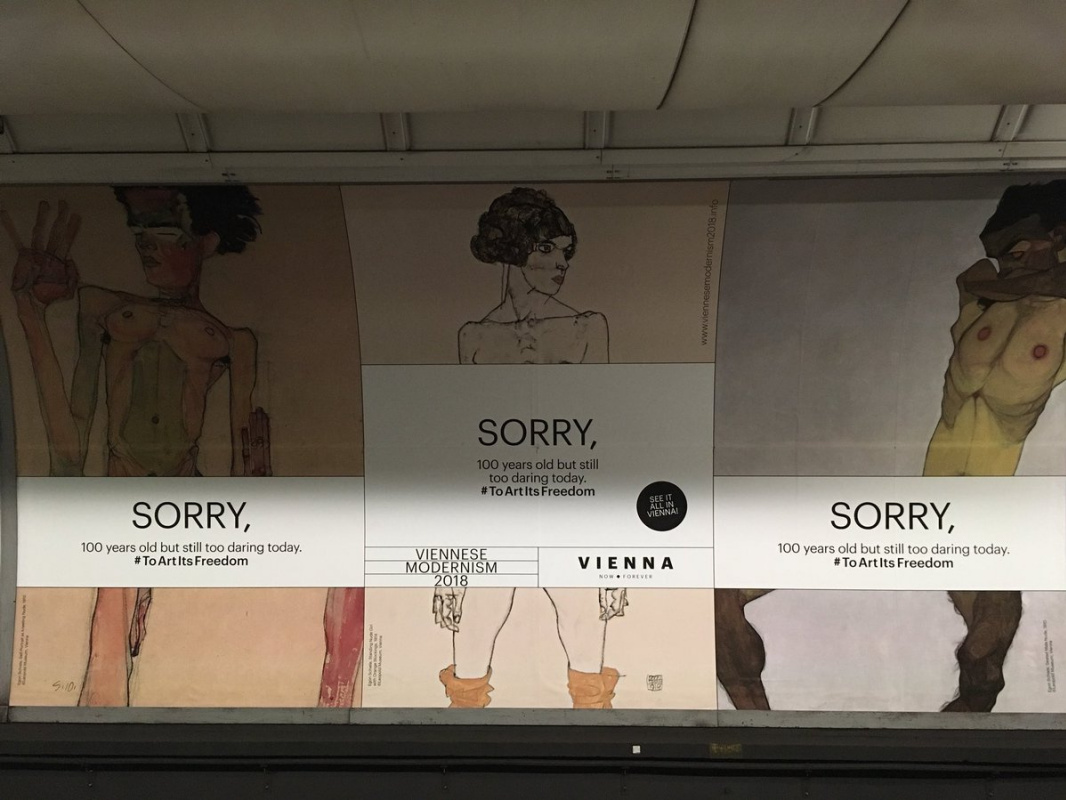
Egon Schiele. ViennaTouristBoard. Photo: Josh Spero Twitter
Both Schiele and his mentor, the painter Gustav Klimt, died in 1918, the same year World War I and the Austro-Hungarian empire
ended. In 2018, museums in Vienna will mount a yearlong series of exhibitions and events to mark the centennial: "Stairway to Klimt" begins at Vienna’s Kunsthistorisches Museum on Feb. 13; "Egon Schiele, Expression and Lyricism" opens at the Leopold Museum on Feb. 23.
Ms. Hartlauer said that modified advertisements with pixelated genitals were also declined. Ultimately approved were versions using the same artworks (Schiele's "Seated Male Nude
(Self-Portrait)," 1910, and "Girl With Orange Stockings," 1914, and other paintings by the artist, all from the Leopold Museum collection), but with certain bits covered by a banner.
In some ways, the no-nude attitudes abroad have been a blessing in disguise for Vienna’s campaign — since early November the Tourist Board has been highlighting images of the public ads with the hashtag #DerKunstihreFreiheit (#ToArtItsFreedom in English) on social media.
In some ways, the no-nude attitudes abroad have been a blessing in disguise for Vienna’s campaign — since early November the Tourist Board has been highlighting images of the public ads with the hashtag #DerKunstihreFreiheit (#ToArtItsFreedom in English) on social media.
Self-portrait
1910, 62.7×44.5 cm
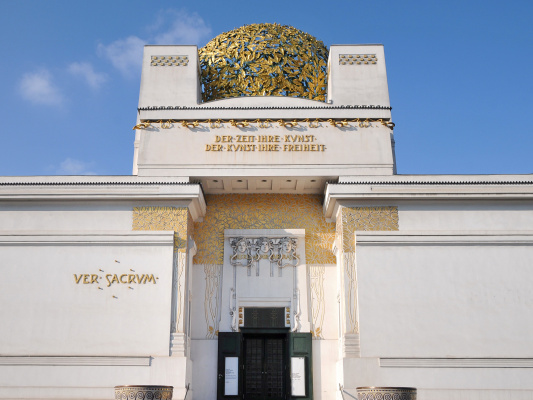
The hashtag comes from the slogan "To every age its art, to art its freedom," still visible in German on the facade of the Viennese Secession, an exhibition venue co-founded by Klimt in 1897 and still operating today as an autonomous artist-run institution. And the controversy certainly echoes discussions that took place in Schiele’s time. In fin-de-siècle Vienna, an era of dramatic shifts in both art and society, many considered the artist’s work to be pornographic. Schiele’s first broader acceptance didn’t come until early 1918 with a major exhibition in the Secession — later that year, the artist succumbed to Spanish flu at age 28.
Left: The Secession building at Vienna
At the Leopold Museum’s annual Schiele symposium in 2017, the author of the most recent edition of the artist’s catalogue raisonné Jane Kallir announced the digital platform in Vienna. She plans making catalogue raisonné online, because there are the hundreds of works by Schiele that have been discovered since the current edition was published in 1990. Schiele’s ouevre includes around 3,000 oil paintings, watercolours and drawings. The fisrt stage of this initiative is to identify and authenticate the original works by Schiele, to be launched by October 2018, the 100th anniversary of Schiele’s death, relying on experts, which she said are more likely to be found in the trade than among curators.
Self-portrait with Physalis
1912, 32.2×39.8 cm
We remind you of "Egon Schiele. Expression and Lyricism" exhibition in the Leopold Museum to mark the 100th anniversary of Egon Schiele’s death in February 2018. The artist’s paintings and graphic works shown for the first time, will be offered in dialogue with his dedications and poems, as well as documents, photographs and personal things. Thus, the exhibition will open a new perspective on the personal experiences of Schiele and his lyrical talent.
The year 1918 marked the passing of four important protagonists of Viennese Modernism — Gustav Klimt, Egon Schiele, Otto Wagner and Koloman Moser. The tourist organization WienTourismus has decided to commemorate the 100th anniversary of their deaths in 2018 with a themed year under the motto ‘Beauty and Abyss' to highlight the achievements of Viennese Modernism and their impact on the arts, literature, architecture, science and society."
The Leopold Museum houses not only the world’s largest Egon Schiele collection, but also the masterpieces from the period of ‘Vienna around 1900' by Gustav Klimt, Josef Hoffmann and Koloman Moser.
The year 1918 marked the passing of four important protagonists of Viennese Modernism — Gustav Klimt, Egon Schiele, Otto Wagner and Koloman Moser. The tourist organization WienTourismus has decided to commemorate the 100th anniversary of their deaths in 2018 with a themed year under the motto ‘Beauty and Abyss' to highlight the achievements of Viennese Modernism and their impact on the arts, literature, architecture, science and society."
The Leopold Museum houses not only the world’s largest Egon Schiele collection, but also the masterpieces from the period of ‘Vienna around 1900' by Gustav Klimt, Josef Hoffmann and Koloman Moser.
Title illustration: ViennaTouristBoard to Twitter. Based on nytimes.com, theartnewspaper.com, leopoldmuseum.org







